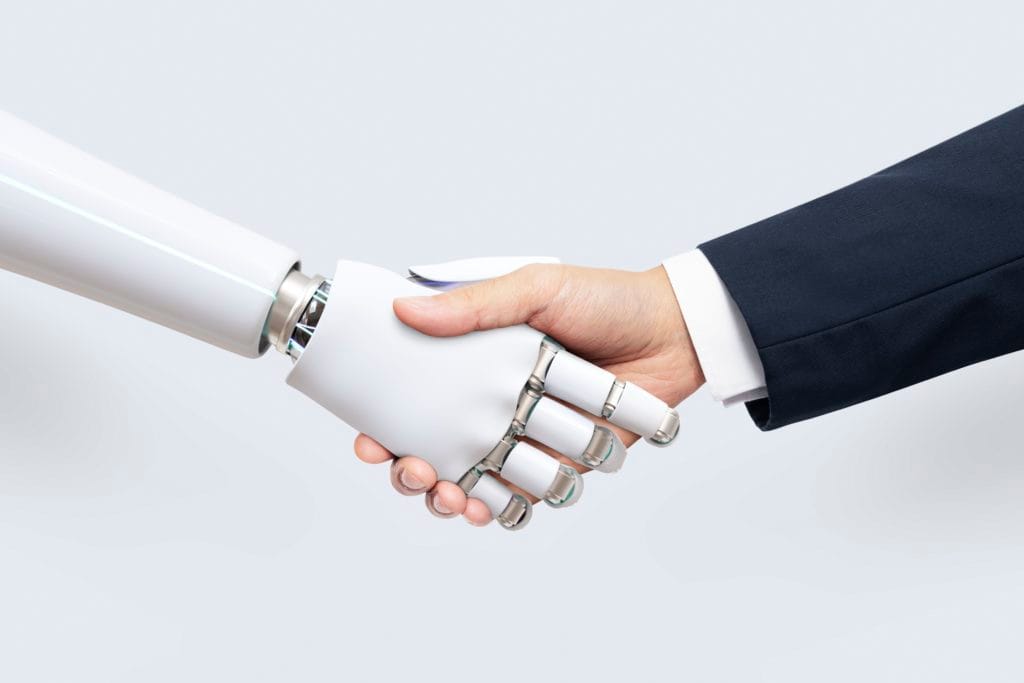Building a Successful Human-AI Partnership in HR Operations

The increasing use of AI in HR decision-making and talent assessment has changed how companies operate in the digital age. With many companies such as Testlify, and Testgorilla in the market, it is evident that AI is here to stay. By 2030, AI is expected to contribute a staggering $15.7 trillion to the global economy. This means that HR professionals have a huge opportunity to optimize HR operations with AI. To achieve the best results and keep a human-centric approach, it is imperative to find a balance between automation and human judgment. This blog examines the advantages, difficulties, and methods for achieving a well-balanced AI integration of technology and human judgment in HR decision-making.
The Role of AI in HR Decision-Making
Benefits
There are several advantages to using AI in HR decision-making, from improved accuracy and efficiency to strategic workforce planning and talent acquisition. AI can handle and analyze enormous volumes of HR data to produce insightful forecasts and insights that free up HR experts to concentrate on more important decision-making duties. Not to be overlooked is the talent assessment aspect of HR operations; artificial intelligence greatly aids in selecting qualified applicants.
Challenges
However, there are a number of difficulties involved with using AI in HR decision-making. Artificial intelligence (AI) may overlook important factors like moral and ethical principles that should be taken into account when making choices because it works with facts. Furthermore, AI is susceptible to bias, which may have unforeseen repercussions.
The Proper Balance
In order to prevent AI’s drawbacks and guarantee the best results, it is imperative to strike a balance between automation and human input. HR departments can make use of AI technology while maintaining the human-centric approach to HR decision-making by adopting a collaborative approach between AI technologies and human expertise. To achieve this collaborative approach, HR professionals must build their AI literacy. This includes comprehending the potential and constraints of AI, evaluating insights produced by AI, and making well-informed decisions based on the integration of human and AI system knowledge. In the next section, we’ll explore the concept of augmented intelligence and why it’s essential for successful collaboration between humans and AI in HR operations.
What is Augmented Intelligence?
Augmented Intelligence (AI) is the integration of human expertise and AI technology to enhance decision-making processes.
- It acknowledges that human judgment, empathy, and creativity are still vital in HR contexts even when AI can offer insightful automation and important insights.
- It involves developing AI algorithms that can learn from human input and enhance the skills of HR specialists, ultimately resulting in more informed and efficient decisions for businesses and workers.
HR departments may leverage AI integration in HR processes while upholding human-centred decision-making processes by cultivating AI literacy. There is a great deal of promise in augmented intelligence to increase scalability, objectivity, and efficiency. Working in HR operations with AI and humans collaborating can make the process simple, smart, and friendly.
Why Human-AI partnership is important in HR Operations?
Companies now have cutting-edge AI solutions for HR management to increase productivity, efficiency, and accuracy. However, finding the ideal mix between automation and human judgement is crucial when it comes to HR decision-making.

Artificial intelligence (AI) algorithms operating without human oversight could yield outcomes that are unethical or unsuitable for the company. Collaboration between humans and AI is therefore crucial to HR operations.
- HR departments can benefit from AI’s predictive algorithms to improve decision-making processes by combining AI with human experience. It’s crucial to remember, though, that AI does not make all of the decisions. Instead, it needs to be employed as a helpful instrument to strengthen human competence, maintain critical assessments, and offer insightful information.
- The integration of human-AI partnerships in HR operations fosters a human-centric approach to decision-making by acknowledging the significance of human judgement, empathy, and creativity in HR settings. HR workers can concentrate more on strategic and complicated jobs that call for their knowledge, creativity, and critical thinking since AI can automate regular and repetitive tasks.
Through human-AI partnerships, HR departments can leverage the power of AI while maintaining human-centric decision-making, ultimately driving better outcomes for employees and organizations.
Strategies for Successful Human-AI Partnerships in HR Operations
Now that we know the benefits and challenges of AI in HR decision-making, let’s delve into the strategies for successful human-AI partnerships in HR operations.

1. Defining the scope of AI integration
For successful HR automation strategies, successful human-AI partnerships should be defining the scope of AI integration. HR departments must identify the areas where AI can effectively augment human decision-making while reserving critical judgments for human professionals. With AI, the transformation of the HR department has become more manageable, making it a ground-breaking technology because of its predictive algorithms that function with human intelligence to improve the employee experience.
According to the Oracle and Workplace Intelligence Survey report, 82% of employees believe AI can assist their careers more effectively than people and 85% want technology to help them define their future. However, HR professionals must be mindful of the limitations of AI and use it to automate routine and repetitive tasks while reserving more nuanced and complex decision-making tasks for human expertise.
2. Continuous learning and improvement
For human-AI partnerships in HR operations to be effective, creating a feedback loop for ongoing learning and development is another crucial tactic. In order to improve AI performance, this iterative method entails gathering input from human users—such as HR professionals—and applying their observations.
AI models are able to adapt and learn from user feedback in order to better meet the unique needs and goals of the company. By utilising human expertise, improving AI algorithms and models, and adapting to changing organisational needs, this feedback loop assists organisations.
3. Collaboration and communication
AI developers and HR specialists must collaborate and communicate on a regular basis to make sure the AI algorithms are in line with the changing needs and objectives of the company. This mutually beneficial feedback loop helps to continuously improve AI technology and promotes its best application in HR decision-making procedures.
In order to improve the algorithms and models, HR departments should collaborate closely with AI software suppliers and promote candid feedback and communication. This will assist in coordinating the AI systems with the demands of HR specialists and enabling them to adjust to the constantly changing needs of the company.
In conclusion, the successful integration of AI in HR decision-making requires a balanced approach that leverages the strengths of both humans and machines. By embracing a collaborative approach and implementing the strategies mentioned above, organizations can harness the power of AI while preserving invaluable human expertise in HR decision-making. This integration brings about more informed, efficient, and effective outcomes for both employees and the organization as a whole.
Developing AI Literacy in HR Professionals
It is imperative that HR professionals acquire AI literacy in order to work with AI technologies in an efficient manner. It entails comprehending AI’s potential and constraints, analysing insights produced by AI, and coming to wise conclusions by combining human and AI system knowledge.
HR departments may leverage AI’s potential while upholding human-centred decision-making processes by cultivating AI literacy, which will eventually improve results for both workers and companies. To put it briefly, in order for HR professionals to work with AI systems and attain augmented intelligence, they must be proficient in AI.
Conclusion
In order to attain the best possible results in HR decision-making, a human-AI partnership is necessary. AI can improve impartiality and efficiency, but human knowledge, imagination, and compassion are still essential. Determining the parameters of AI integration, ongoing learning and development, and frequent cooperation and communication between AI developers and HR specialists are all strategies for a fruitful partnership. It’s also critical that HR workers become literate in AI. AI and human knowledge can collaborate to get superior results.
-Author Bio-
Full name – Abhishek Shah
Position– CEO (Testlify)
Short Bio– I’m an empathetic leader, and firmly believe the only way to lead is to serve others. I love building startups from the ground up. Coming up with the idea, refining it, building the team, and solving problems. I’ve been fortunate to have worked with amazing people and built some great products. I’m excited to keep learning, doing, and having fun.
Link to LinkedIn or other social profiles- https://www.linkedin.com/in/abhishekrshah/